Spatio-temporal remodeling of functional membrane microdomains organizes the signaling networks of a bacterium
- PMID: 25909364
- PMCID: PMC4409396
- DOI: 10.1371/journal.pgen.1005140
Spatio-temporal remodeling of functional membrane microdomains organizes the signaling networks of a bacterium
Abstract
Lipid rafts are membrane microdomains specialized in the regulation of numerous cellular processes related to membrane organization, as diverse as signal transduction, protein sorting, membrane trafficking or pathogen invasion. It has been proposed that this functional diversity would require a heterogeneous population of raft domains with varying compositions. However, a mechanism for such diversification is not known. We recently discovered that bacterial membranes organize their signal transduction pathways in functional membrane microdomains (FMMs) that are structurally and functionally similar to the eukaryotic lipid rafts. In this report, we took advantage of the tractability of the prokaryotic model Bacillus subtilis to provide evidence for the coexistence of two distinct families of FMMs in bacterial membranes, displaying a distinctive distribution of proteins specialized in different biological processes. One family of microdomains harbors the scaffolding flotillin protein FloA that selectively tethers proteins specialized in regulating cell envelope turnover and primary metabolism. A second population of microdomains containing the two scaffolding flotillins, FloA and FloT, arises exclusively at later stages of cell growth and specializes in adaptation of cells to stationary phase. Importantly, the diversification of membrane microdomains does not occur arbitrarily. We discovered that bacterial cells control the spatio-temporal remodeling of microdomains by restricting the activation of FloT expression to stationary phase. This regulation ensures a sequential assembly of functionally specialized membrane microdomains to strategically organize signaling networks at the right time during the lifespan of a bacterium.
Conflict of interest statement
The authors have declared that no competing interests exist.
Figures

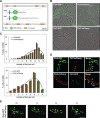

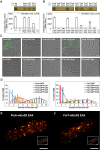
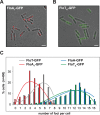

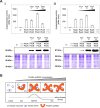
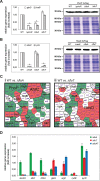

Similar articles
-
Functional Membrane Microdomains Organize Signaling Networks in Bacteria.J Membr Biol. 2017 Aug;250(4):367-378. doi: 10.1007/s00232-016-9923-0. Epub 2016 Aug 26. J Membr Biol. 2017. PMID: 27566471 Review.
-
Synthetic motility and cell shape defects associated with deletions of flotillin/reggie paralogs in Bacillus subtilis and interplay of these proteins with NfeD proteins.J Bacteriol. 2012 Sep;194(17):4652-61. doi: 10.1128/JB.00910-12. Epub 2012 Jun 29. J Bacteriol. 2012. PMID: 22753055 Free PMC article.
-
Molecular composition of functional microdomains in bacterial membranes.Chem Phys Lipids. 2015 Nov;192:3-11. doi: 10.1016/j.chemphyslip.2015.08.015. Epub 2015 Aug 28. Chem Phys Lipids. 2015. PMID: 26320704 Review.
-
Super Resolution Fluorescence Microscopy and Tracking of Bacterial Flotillin (Reggie) Paralogs Provide Evidence for Defined-Sized Protein Microdomains within the Bacterial Membrane but Absence of Clusters Containing Detergent-Resistant Proteins.PLoS Genet. 2016 Jun 30;12(6):e1006116. doi: 10.1371/journal.pgen.1006116. eCollection 2016 Jun. PLoS Genet. 2016. PMID: 27362352 Free PMC article.
-
Overproduction of flotillin influences cell differentiation and shape in Bacillus subtilis.mBio. 2013 Nov 12;4(6):e00719-13. doi: 10.1128/mBio.00719-13. mBio. 2013. PMID: 24222488 Free PMC article.
Cited by
-
Functional Membrane Microdomains Organize Signaling Networks in Bacteria.J Membr Biol. 2017 Aug;250(4):367-378. doi: 10.1007/s00232-016-9923-0. Epub 2016 Aug 26. J Membr Biol. 2017. PMID: 27566471 Review.
-
Flotillin scaffold activity contributes to type VII secretion system assembly in Staphylococcus aureus.PLoS Pathog. 2017 Nov 22;13(11):e1006728. doi: 10.1371/journal.ppat.1006728. eCollection 2017 Nov. PLoS Pathog. 2017. PMID: 29166667 Free PMC article.
-
Proteomic analysis of Escherichia coli detergent-resistant membranes (DRM).PLoS One. 2019 Oct 11;14(10):e0223794. doi: 10.1371/journal.pone.0223794. eCollection 2019. PLoS One. 2019. PMID: 31603938 Free PMC article.
-
Lipids in the cell: organisation regulates function.Cell Mol Life Sci. 2018 Jun;75(11):1909-1927. doi: 10.1007/s00018-018-2765-4. Epub 2018 Feb 9. Cell Mol Life Sci. 2018. PMID: 29427074 Free PMC article. Review.
-
Beyond the bulk: disclosing the life of single microbial cells.FEMS Microbiol Rev. 2017 Nov 1;41(6):751-780. doi: 10.1093/femsre/fux044. FEMS Microbiol Rev. 2017. PMID: 29029257 Free PMC article. Review.
References
Publication types
MeSH terms
Substances
Associated data
- Actions
LinkOut - more resources
Full Text Sources
Other Literature Sources
Molecular Biology Databases

